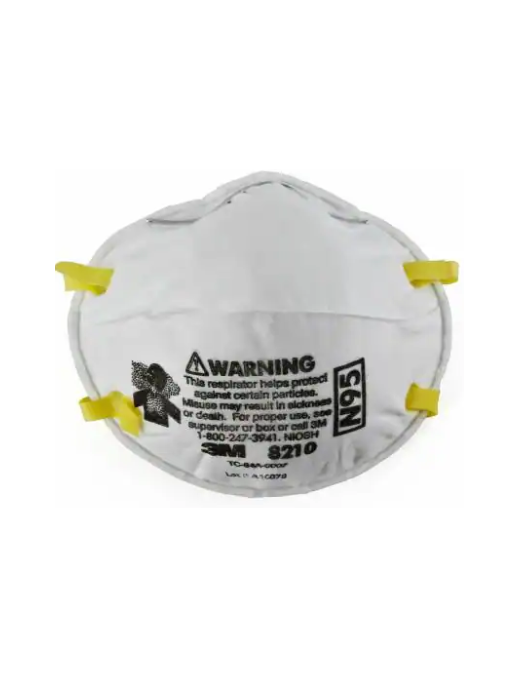
- New

3M™ 8000 Cup Series Particulate Respirators are lightweight, disposable respirators designed to provide convenient, reliable respiratory protection in situations where particulate respiratory protection is warranted and can provide protection from certain non-oil based particles.
 Security policy
Security policy
(edit with the Customer Reassurance module)
 Delivery policy
Delivery policy
(edit with the Customer Reassurance module)
 Return policy
Return policy
(edit with the Customer Reassurance module)
Acid Gas Reduction: No
Advanced Electrostatic Media: Yes
Application: Grinding metal, Sanding surfaces, Sawing Wood, Installing Insulation
Braided Comfort Strap: No, Yes, Yes (Wide)
Brands: 3M
Cake-Resistant Filter Media: No
Class: Comfort Plus, Comfort, Specialty
Cool Flow™ Exhalation Valve: Yes, No
Enhanced Comfort: No, Yes
Environment - Hot or Humid: Yes, No
Exhalation Valve: Yes, No
Faceseal: No, Yes
Features: 3M™ Cool Flow™ Valve, N100 Required, Advanced Electrostatic Media, Environment - Hot or Humid, M Noseclip, Stapled Headband, Braided Comfort Strap, Advanced Electret Media, Welded Headband, Nosefoam, Latex Free, Faceseal, Adjustable Buckle Straps
Filter Class: N95, N100
Flame Resistance (ASTM D2859-96): No
Fluid Resistant (ASTM F1862): No
Hazard Type: Particulate, Mold
Inner Packs per Case: 2 Cartons per Case, 8 Cartons per Case, 20 Cartons per Case
Maintenance Free: Yes
NIOSH Approval Number: TC-84A-0007, TC-84A-1298
Noseclip Style: M-noseclip
Nosefoam: Yes, No
Nuisance Odor Relief (< OSHA PEL): No, N/A
Organic Vapor Reduction: No
Product Series: 8000
Recommended Application: oundry Operation, Dry Chemical Handling, Agricultural Production, Airborne Biological Particles, Bagging, Cleaning, Sanding, Grinding, Assembly & Mechanical, Processing of Minerals, Textile Operations, Pharmaceutical Manufacturing, Petrochemical Manufacturing, Emergency & Pandemic Preparedness
Recommended Industry: Mining, Transportation, Design & Construction, Oil & Gas, General Manufacturing, Construction, Commercial Buildings, Food Processing, Food Safety, Heavy Infrastructure, Agricultural, Industrial Maintenance, Marine
Registered Medical Device: No
Respirator Size: Standard, Small
Respirator Style: Cup
Shelf Life: 5 Year
Smallest Saleable Unit: Each, Pack
Specifications Met: Assigned Protection Factor (APF) = 10, N95, N100
Strap Attachment Type: Stapled, Welded, Adjustable Buckle
Strap Material: Polyisoprene, Braided Elastic, Thermoplastic Elastomer (TPE)
Total Units per Case: 20 per Case, 32 per Case, 80 per Case, 160 per Case
Units per Inner Pack: 2 Each